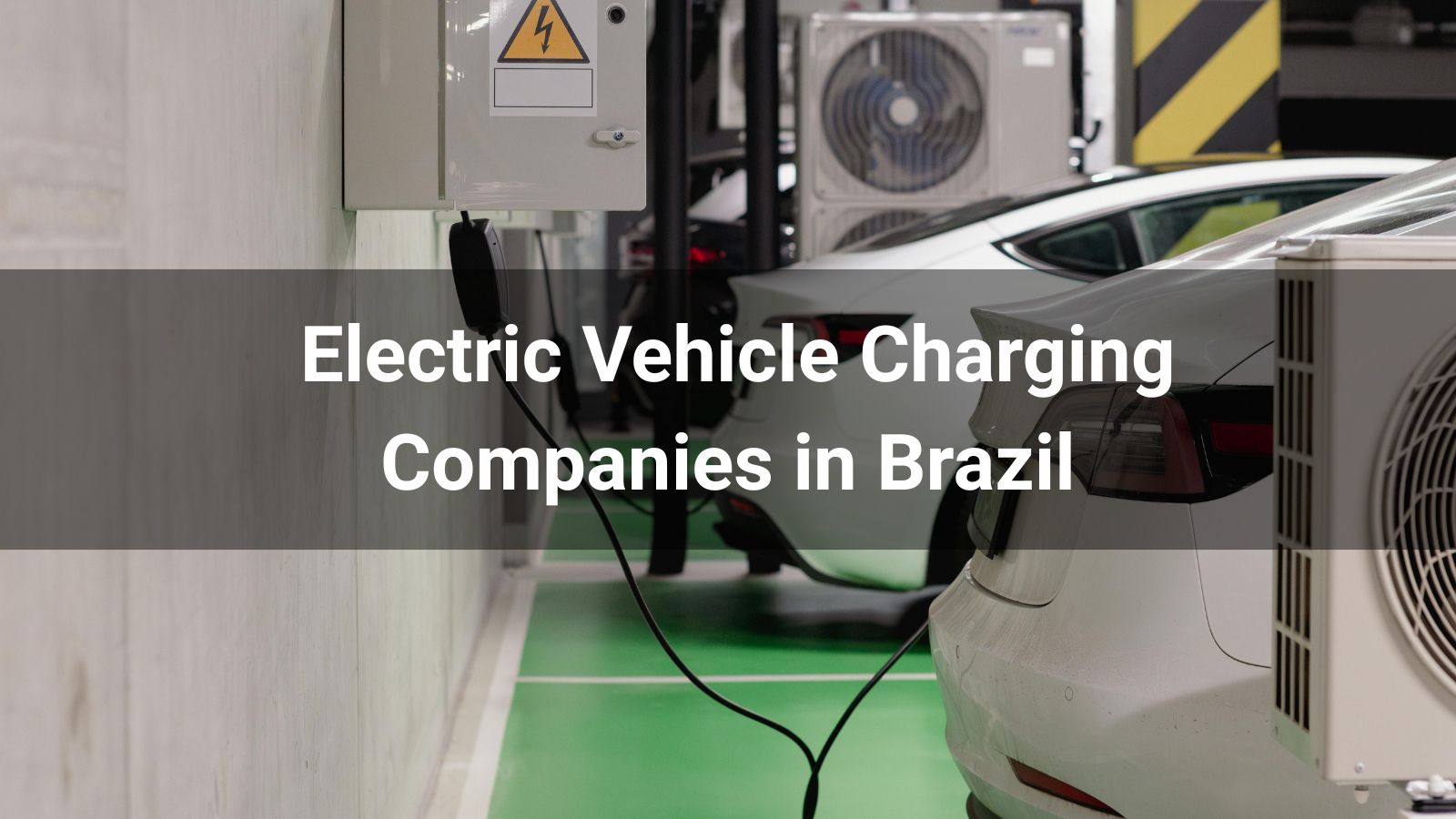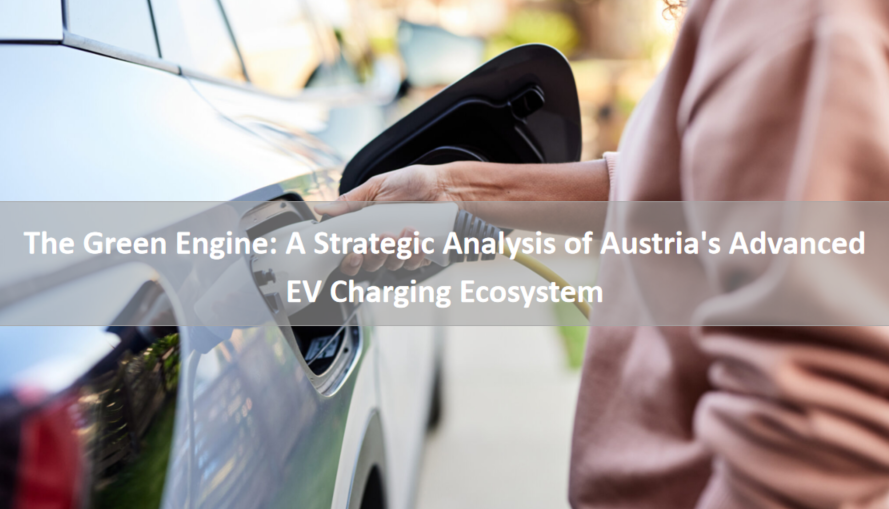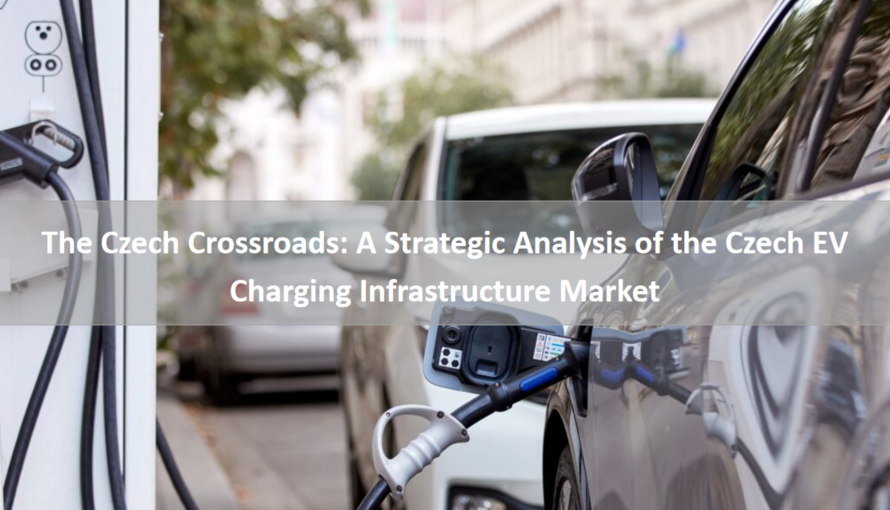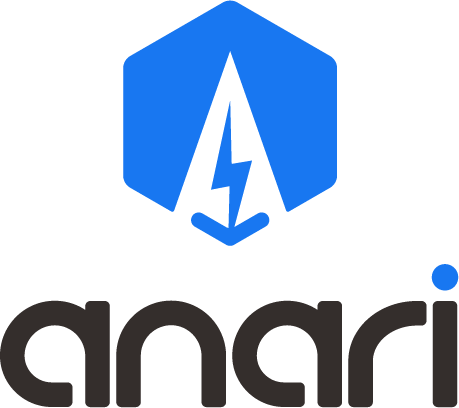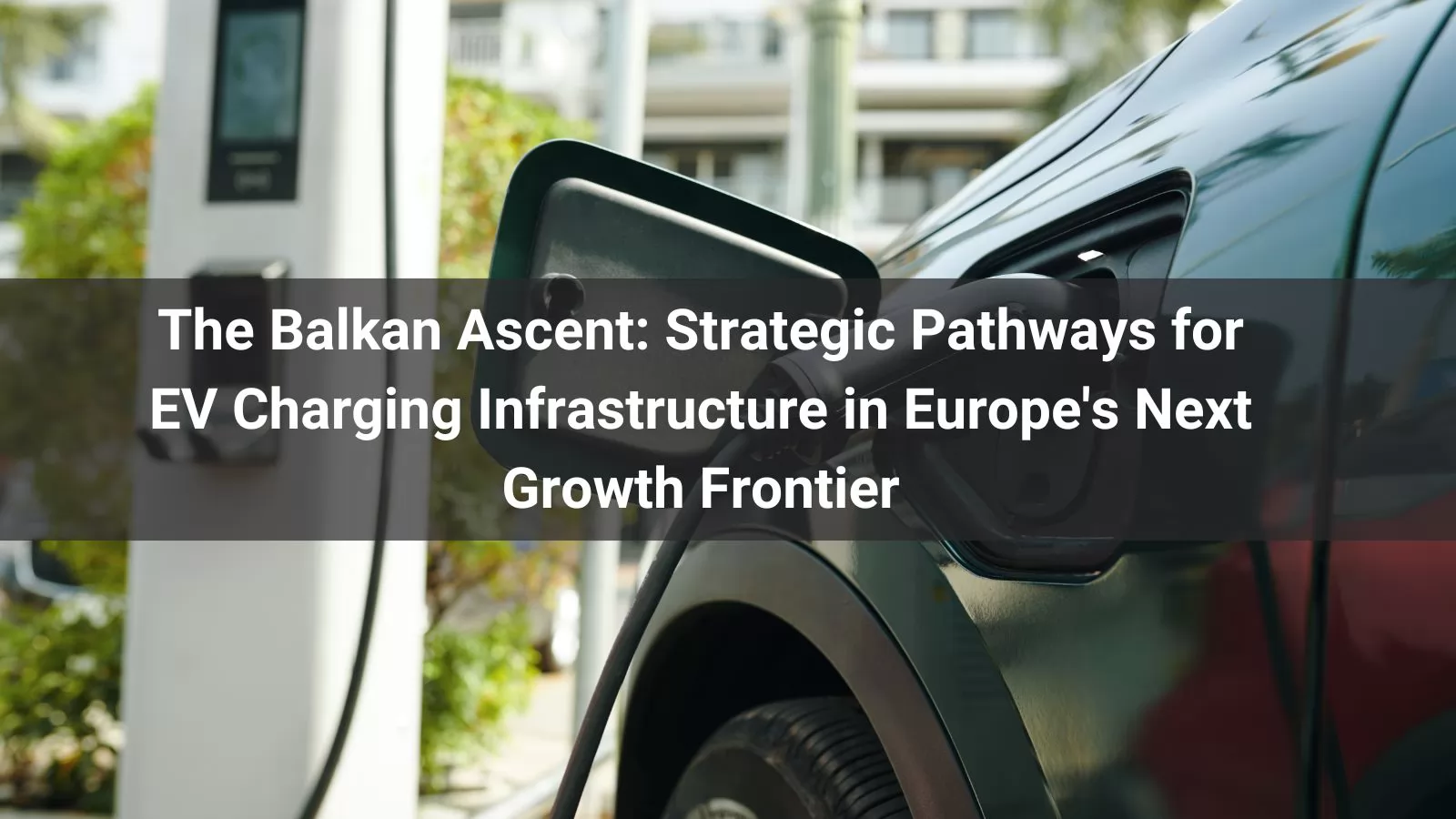
The Balkan region, a historical crossroads, is now emerging as a critical new frontier in Europe's electric mobility transition. This diverse group of nations—from EU members like Croatia, Bulgaria, and Romania to aspiring members in the Western Balkans—presents a complex yet high-potential landscape for charging infrastructure development. The market is characterized by a powerful convergence of EU funding, nascent but accelerating EV adoption, and unique local challenges including grid constraints and economic sensitivity. This analysis concludes that the Balkan charging market cannot be addressed with solutions designed for mature Western European ecosystems. Success will be determined by a provider's ability to deliver radically reliable, economically-optimized, and grid-resilient charging solutions. The companies that will lead are those that view the region not as a secondary market, but as a primary opportunity requiring a dedicated, pragmatic, and partnership-driven approach.
The Balkan EV market is in its formative stage, yet its growth trajectory is steep and underpinned by powerful structural forces. The region must be understood in two distinct but interconnected segments: the EU-member states and the Western Balkans.
As EU members, these countries are direct beneficiaries of the European Green Deal and its associated funding mechanisms. Their EV markets are the most advanced in the region. •Romania is emerging as a regional leader, spurred by one of Europe's most ambitious subsidy programs, the "Rabla Plus" program. This has significantly boosted the adoption of both new and used EVs. The market is characterized by a price-sensitive consumer base and a growing number of local EV importers and service networks. •Bulgaria is following a similar path, albeit at a slightly slower pace. Government incentives are now in place, and the market is poised for growth. A key characteristic is the concentration of early adopters in Sofia, creating an initial, concentrated demand for charging.
Croatia holds a unique position. As an EU and Schengen member with a massive tourism economy, its EV adoption is heavily influenced by two factors: the need to service foreign EVs during the tourist season and the alignment of its national policies with EU directives. The charging infrastructure here has a dual purpose: serving the local population and enabling seamless travel for tourists, making interoperability with European charging networks a top priority.
This group represents the nascent but critically important segment of the region. •Serbia, as the largest economy in the Western Balkans, is taking proactive steps. It has introduced purchase incentives and is beginning to develop a regulatory framework. The market is currently led by electric buses in public transport and a small but growing number of passenger EVs, often supported by corporate fleets. •Bosnia and Herzegovina and Albania are at the very early stages. However, the prevalence of high levels of air pollution in cities like Sarajevo is creating a powerful public demand for cleaner transport solutions. The first movers are often municipal fleets and electric two-wheelers. Unifying Insight: The entire Balkan region is on the cusp of a transformation. The current low penetration rate is not an indicator of potential but a marker of opportunity. The next five years will see a dramatic increase in the number of EVs, first in the EU-member states and rapidly followed by the Western Balkans, driven by a combination of policy, falling EV prices, and growing environmental awareness.
Demand analysis in the Balkans must be rooted in the region's economic reality and geographic diversity. The key is to identify the foundational demand drivers that will support a sustainable business case for CPOs.
The Balkans are traversed by critical Trans-European Transport Network (TEN-T) corridors, such as the Mediterranean Corridor and the Orient/East-Med Corridor. Electrifying these highways is a continental strategic priority. This creates a non-negotiable, foundational demand for: •Reliable DC Fast Charging (50-150kW): Stations must be located at strategic intervals (approximately 100-150 km) along these routes to enable cross-border and inter-city travel. For this demand segment, uptime is the single most important metric. A broken charger on a major highway does more than lose revenue; it shatters consumer confidence and stalls the entire ecosystem's development.
A significant and often overlooked demand driver is the commercial sector in urban areas. •Last-Mile Delivery Vans: The rapid growth of e-commerce and logistics is driving demand for depot-based charging for electric vans. For these fleet operators, the business case is purely mathematical, centered on Total Cost of Ownership (TCO). They require affordable, reliable AC charging solutions with robust backend management for cost tracking. •Taxi and Ride-Hailing Services: In major cities like Bucharest, Belgrade, and Sofia, the electrification of professional driver services is beginning. These users require access to public DC fast chargers for quick turnarounds, creating a predictable, high-utilization demand node.
A defining characteristic of the Balkan region, particularly outside capital cities, is the constrained and often unstable electricity grid. This is not a minor inconvenience but a fundamental design constraint. •Charging solutions must be engineered to have a minimal negative impact on grid quality. Features like low harmonic distortion and soft-start capabilities are essential to prevent brownouts and protect sensitive local equipment. •The economic viability of many sites will depend on solutions that can operate within strict grid capacity limits. This makes smart load management and, in the near future, battery-integrated buffering systems, critical for scaling infrastructure without requiring prohibitively expensive grid upgrades.
The economic sensitivity of the market cannot be overstated. CPOs and distributors are building businesses in a context where capital is scarce and operational margins are tight. They require charging stations that offer: •Low Initial Capital Outlay (CAPEX): To enable wider deployment. •Minimal Operational Costs (OPEX): Achieved through high energy efficiency and, crucially, extreme reliability to minimize maintenance and repair costs, which can be debilitating in regions with sparse service networks. •Rugged Durability: Hardware must be built to withstand not only harsh weather but also the potential for vandalism and rough use in public spaces. A charger with an IP54 rating and a corrosion-resistant powder-coated casing, like the Anari EV Pales DC Series, is not a premium feature but a baseline requirement for longevity in the Balkan environment.
The current infrastructure landscape is a clear reflection of the market's early-stage development, marked by promise and significant gaps. •The Capital City Concentration: Over 80% of public charging stations are concentrated in the capital cities (Bucharest, Sofia, Zagreb, Belgrade). This creates a severe "charging desert" between urban centers and in rural areas, actively inhibiting inter-city EV travel and limiting the market to city dwellers with access to home charging. •The Power Gap: The existing network is overwhelmingly composed of AC chargers (22kW and below). DC fast chargers are few and far between, and their reliability is often inconsistent. This lack of fast-charging options is a primary psychological and practical barrier to mass EV adoption. •A Fragmented and Immature CPO Landscape: The market is characterized by a large number of small, local operators, with limited geographic coverage and little to no interoperability. This results in a poor user experience, requiring multiple subscriptions and apps for a single journey across the region. •Dependence on Public Funding: A significant portion of the installed base, particularly in the Western Balkans, has been funded by international development banks or municipal grants. While crucial for kick-starting the market, this can sometimes lead to a focus on installation metrics over long-term operational reliability and business viability.
A successful decade-long rollout requires a pragmatic, phased strategy that moves from building foundational confidence to achieving a mature, integrated network.
•Focus: Establish a 100% reliable DC fast-charging backbone along all key TEN-T corridors. Simultaneously, deploy high-utilization public charging hubs in the capital cities to serve commercial and multi-tenant residential users. •Action: Prioritize deployments at existing, high-amenity service stations. For urban hubs, focus on strategic locations like shopping malls and public parking facilities. •Technology Emphasis: Deploy cost-optimized, rugged 50-150kW DC chargers with a primary design goal of maximum uptime and ease of service. OCPP 1.6J compliance is mandatory to ensure backend flexibility for CPOs. The Anari EV Pales DC Series, engineered for value and resilience, is purpose-built for this phase, offering the reliability and low TCO needed to build a sustainable business foundation.
•Focus: Densify the corridor network and begin deploying charging infrastructure in secondary cities. Pilot and scale solutions that address grid constraints, such as battery-buffered charging stations and solar-canopy installations. •Action: Encourage consolidation and interoperability among CPOs to improve the user experience. Work with utilities to identify grid-upgrade priorities and implement smart charging solutions that can defer costly infrastructure investments. •Technology Emphasis: Wider adoption of modular chargers that allow for future power upgrades. Integration of energy storage systems at high-demand sites. Implementation of advanced charging management software for dynamic load balancing.
•Focus: Achieve ubiquitous charging availability, with a dense network of AC chargers in urban areas and a comprehensive DC network that covers all major roads and tourist destinations. Integrate the charging network with renewable energy generation. •Action: Full rollout of smart and bidirectional charging capabilities where the grid allows. Development of specialized logistics hubs with High-Power Charging (HPC) for heavy-duty trucks. •Technology Emphasis: Focus on V2G integration, AI-powered energy management, and the development of a seamless, region-wide roaming platform for authentication and payment.
The Balkan EV charging market is at a pivotal juncture. The direction it takes in the next 3-5 years will set the trajectory for the following decade. The opportunities are immense, but the risks of deploying ill-suited, complex, or unreliable technology are equally high. The strategic imperatives for stakeholders are clear: •Reliability is the Foundation of Growth: In a market building trust from the ground up, every charging session must be successful. Hardware reliability is the most critical success factor, outweighing marginal gains in power or premium features. •Economic Viability Drives Scale: Solutions must be optimized for low TCO, not just low CAPEX. The business case for CPOs depends on minimizing operational disruptions and repair costs. •Grid Compatibility is a Strategic Advantage: The most deployable solutions will be those that are gentle on the local grid, acting as good citizens rather than demanding burdensome upgrades. •A Phased, Corridor-First Strategy is Essential: Building a reliable network along major highways is the first step to unlocking the entire regional market, as it enables the confidence for broader EV adoption. Strategic Implication for Anari Energy: Our core corporate philosophy—"Engineered for Reliability and the Future"—is not a marketing slogan but a direct response to the fundamental needs of the Balkan market. Our product strategy, exemplified by the Pales DC Series, is predicated on delivering the rugged durability, grid-friendly operation, and economic accessibility that this region demands. For distributors, CPOs, and installers in the Balkans, Anari Energy offers more than a product; we offer a partnership grounded in a shared understanding that the path to a successful electric future is built on a foundation of unwavering reliability and pragmatic, value-driven engineering.

